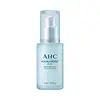What's inside
What's inside
 Key Ingredients
Key Ingredients

 Benefits
Benefits

 Concerns
Concerns

No concerns
 Ingredients Side-by-side
Ingredients Side-by-side

Water
Skin ConditioningPropanediol
SolventSodium Hyaluronate
HumectantGlycerin
HumectantButylene Glycol
HumectantPhenoxyethanol
PreservativeAmmonium Acryloyldimethyltaurate/Vp Copolymer
Leuconostoc/Radish Root Ferment Filtrate
AntimicrobialHyaluronic Acid
HumectantCarbomer
Emulsion StabilisingSodium Lactate
BufferingPolysorbate 20
EmulsifyingPalmitoyl Tetrapeptide-7
Skin ConditioningPalmitoyl Tripeptide-1
Skin ConditioningButylene Glycol
HumectantGlycerin
HumectantDipropylene Glycol
HumectantNiacinamide
SmoothingCodium Tomentosum Extract
Skin ProtectingEnteromorpha Compressa Extract
Skin ProtectingUndaria Pinnatifida Extract
Skin ConditioningGlycereth-25 PCA Isostearate
EmulsifyingEthylhexyl Palmitate
EmollientArtemisia Princeps Leaf Extract
Skin ConditioningCarbomer
Emulsion StabilisingTromethamine
BufferingXanthan Gum
EmulsifyingCetyl Ethylhexanoate
EmollientHydroxyethylcellulose
Emulsion StabilisingEthylhexylglycerin
Skin ConditioningSea Water
HumectantParfum
MaskingAdenosine
Skin ConditioningPolyglyceryl-10 Oleate
Skin ConditioningBiosaccharide Gum-1
HumectantDisodium EDTA
Trehalose
HumectantSodium Hyaluronate
HumectantHydrogenated Lecithin
EmulsifyingPropanediol
SolventCaprylic/Capric Triglyceride
MaskingZinc PCA
HumectantButyrospermum Parkii Butter
Skin ConditioningMyrothamnus Flabellifolia Leaf/Stem Extract
HumectantCeramide NP
Skin ConditioningCholesterol
EmollientCeramide As
Skin ConditioningCeramide Ns
Skin ConditioningAscorbic Acid
AntioxidantCitric Acid
BufferingCeramide AP
Skin ConditioningEucalyptus Globulus Leaf Extract
PerfumingAsiaticoside
AntioxidantAsiatic Acid
Skin ConditioningPhytosphingosine
Skin ConditioningMadecassic Acid
Skin ConditioningMagnesium PCA
HumectantSodium Lactate
BufferingCopper Tripeptide-1
Skin ConditioningSerine
MaskingSucrose
HumectantUrea
BufferingGlycine
BufferingCalcium Chloride
AstringentPotassium Hydroxide
BufferingOrnithine
Skin ConditioningSea Salt
AbrasiveAlanine
MaskingMagnesium Chloride
Threonine
Histidine
HumectantAspartic Acid
MaskingButylene Glycol, Glycerin, Dipropylene Glycol, Niacinamide, Codium Tomentosum Extract, Enteromorpha Compressa Extract, Undaria Pinnatifida Extract, Glycereth-25 PCA Isostearate, Ethylhexyl Palmitate, Artemisia Princeps Leaf Extract, Carbomer, Tromethamine, Xanthan Gum, Cetyl Ethylhexanoate, Hydroxyethylcellulose, Ethylhexylglycerin, Sea Water, Parfum, Adenosine, Polyglyceryl-10 Oleate, Biosaccharide Gum-1, Disodium EDTA, Trehalose, Sodium Hyaluronate, Hydrogenated Lecithin, Propanediol, Caprylic/Capric Triglyceride, Zinc PCA, Butyrospermum Parkii Butter, Myrothamnus Flabellifolia Leaf/Stem Extract, Ceramide NP, Cholesterol, Ceramide As, Ceramide Ns, Ascorbic Acid, Citric Acid, Ceramide AP, Eucalyptus Globulus Leaf Extract, Asiaticoside, Asiatic Acid, Phytosphingosine, Madecassic Acid, Magnesium PCA, Sodium Lactate, Copper Tripeptide-1, Serine, Sucrose, Urea, Glycine, Calcium Chloride, Potassium Hydroxide, Ornithine, Sea Salt, Alanine, Magnesium Chloride, Threonine, Histidine, Aspartic Acid
 Reviews
Reviews

Ingredients Explained
These ingredients are found in both products.
Ingredients higher up in an ingredient list are typically present in a larger amount.
Butylene Glycol (or BG) is used within cosmetic products for a few different reasons:
Overall, Butylene Glycol is a safe and well-rounded ingredient that works well with other ingredients.
Though this ingredient works well with most skin types, some people with sensitive skin may experience a reaction such as allergic rashes, closed comedones, or itchiness.
Learn more about Butylene GlycolCarbomer is a polymer of acrylic acid. Its main role is to create a gel consistency.
A high amount of carbomer can cause pilling or balling up of products. Don't worry, most products contain 1% or less of carbomer.
Glycerin is already naturally found in your skin. It helps moisturize and protect your skin.
A study from 2016 found glycerin to be more effective as a humectant than AHAs and hyaluronic acid.
As a humectant, it helps the skin stay hydrated by pulling moisture to your skin. The low molecular weight of glycerin allows it to pull moisture into the deeper layers of your skin.
Hydrated skin improves your skin barrier; Your skin barrier helps protect against irritants and bacteria.
Glycerin has also been found to have antimicrobial and antiviral properties. Due to these properties, glycerin is often used in wound and burn treatments.
In cosmetics, glycerin is usually derived from plants such as soybean or palm. However, it can also be sourced from animals, such as tallow or animal fat.
This ingredient is organic, colorless, odorless, and non-toxic.
Glycerin is the name for this ingredient in American English. British English uses Glycerol/Glycerine.
Learn more about GlycerinPropanediol is an all-star ingredient. It softens, hydrates, and smooths the skin.
It’s often used to:
Propanediol is not likely to cause sensitivity and considered safe to use. It is derived from corn or petroleum with a clear color and no scent.
Learn more about PropanediolSodium Hyaluronate is hyaluronic acid's salt form. It is commonly derived from the sodium salt of hyaluronic acid.
Like hyaluronic acid, it is great at holding water and acts as a humectant. This makes it a great skin hydrating ingredient.
Sodium Hyaluronate is naturally occurring in our bodies and is mostly found in eye fluid and joints.
These are some other common types of Hyaluronic Acid:
Learn more about Sodium HyaluronateSodium Lactate is the sodium salt of lactic acid, an AHA. It is a humectant and sometimes used to adjust the pH of a product.
This ingredient is part of our skin's NMF, or natural moisturizing factor. Our NMF is essential for the hydration of our top skin layers and plasticity of skin. NMF also influences our skin's natural acid mantle and pH, which protects our skin from harmful bacteria.
High percentages of Sodium Lactate can have an exfoliating effect.
Fun fact: Sodium Lactate is produced from fermented sugar.
Learn more about Sodium Lactate